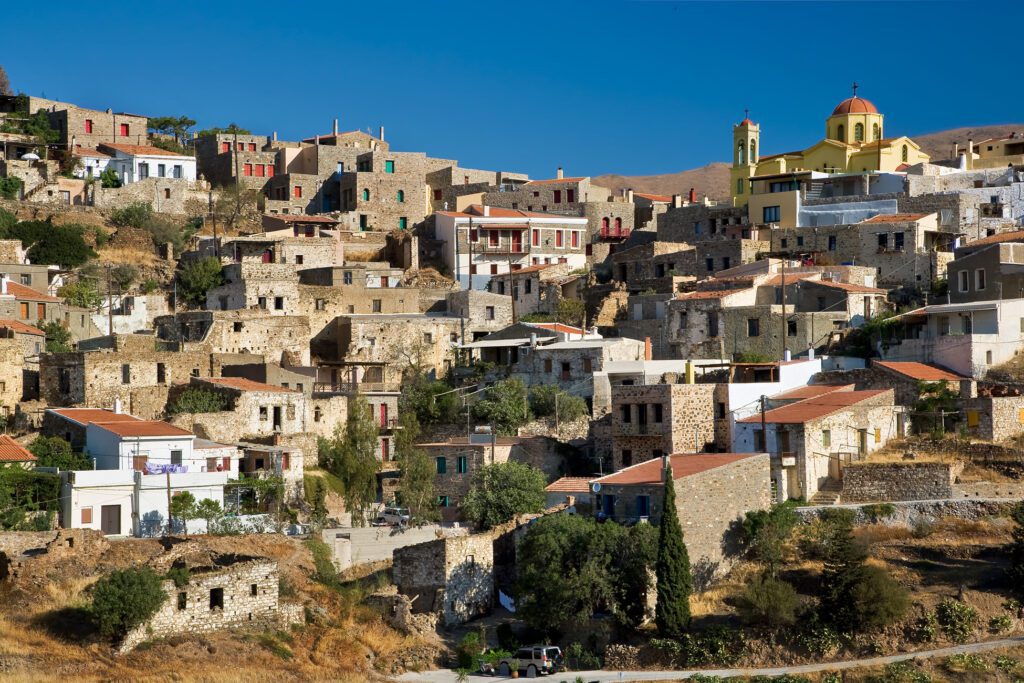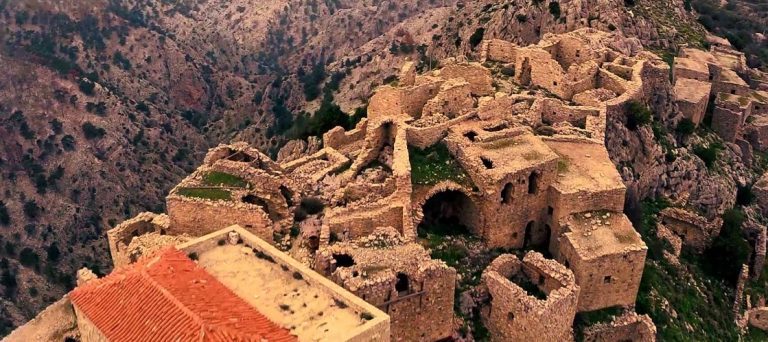Introduction
Chios island, Greece is the fifth biggest island in the Northern Aegean sea off the coast of Turkey. It has a fascinating, albeit on occasion tragic beyond with a records of relentless warfare with its neighbor in addition to different invaders. There are more than a few of factors that make Chios (pronounced “E-os” and now no longer to be pressured with the similar-sounding Ios island withinside the Cyclades) pretty specific and exceptional from the opposite Greek Islands.
Firstly it’s miles believed to be the birthplace of Homer, the historic poet and author who wrote The Iliad, the western worlds first posted book. There is likewise a few proof that it additionally may also had been the birthplace of Christopher Columbus and in fact, Columbus is a famous surname at the island to this day. It is likewise domestic to the very uncommon Mastic bushes, small timber which produce a resin that changed into used withinside the unique chewing gum and continues to be used these days in food, cosmetics and different things. When you pressure round Chios in summer time season you may scent the Mastic timber and the rosemary and oregano developing wild close to the road, as a result the time period the ‘fragrant’ island. Chios as soon as had a booming delivery enterprise however these days its number one industries are in general agricultural with citrus, olives, figs, cherries and of course, mastic being the principle crops.

A mastic-scented island with fascinating history
Much as Chios is well-known for its mastic, it isn’t the only “magic” you can discover in this island. Alongside its wealthy records beginning from the Neolithic Age and inclusive of adventures with Saracene pirates and the Turks for the duration of the Greek Revolution, Chios additionally claims to be the birthplace of Homer. It become really the birthplace of eminent Greek politicians and writers inclusive of Adamantios Korais, Emmanouil Roidis and Alexandre Mavrokordatos.
The most famous local product is mastic.
Known during the world, mastic is an appellation d’origine contrôlée (= managed designation of origin) product developing handiest withinside the South of Chios, wherein it’s been raised for the reason that 8th-seventh century A.D. This herbal product is cultivated totally via way of means of hand and is in recent times utilized in medicine, pharmacy, dentistry and cosmetics. At the significant marketplace of the metropolis of Chios, you could purchase mastic-primarily based totally jams and sweets, brandies and, of course, neighborhood scrumptious ouzo!

Chios, a part of the Northeastern Aegean island complex, is domestic to 53,000 humans today. Explore the locations wherein those humans construct their daily lives: both in medieval settlements wherein Genoa and Chios meet, or in lovely small cities through the sea, and take part in non secular festivities wherein the locals make their very own colorful history, together with the explosive Easter Saturday night time in Vrontados.
Discover the town of Chios

Atmospheric medieval mastic villages and seashores of untamed splendor with volcanic pebbles will actually take your breath away. Mansion homes with flowery gardens and citrus orchards and dense forests with astonishing tears of mastic will astonish your eyes. Impressive mosaics and geometric shapes with floral motifs and abandoned settlements with remnants of the thirteen century will tour you lower back in time. A distinct global is unfolding in the front of you geared up to be explored. Hanging in a nook of the Aegean, the fee of Chios is undying blessed from the aromatic scents of mastic and the majestic diversities of the landscapes. Every vicinity of the island is hiding an surprising wonder. Notorious for his or her naval records, the Chians are proud for his or her records and traditions giving an amazing possibility to the tourists to enjoy the true f ace of Greece. If you’re pursuing in coming across the opposite facet of Greece, the unexplored and mysterious one, you then definately have to really go to Chios. Deserted to its unique splendor, Chios served as an financial and cultural middle withinside the northern a part of the Aegean, with a sting of invaders and large powers, that gave to the island a completely unique man or woman and an notable identification so that it will actually wonder you. Are you geared up to unveil the mysteries of Chios?

Highlights
- Some shopping at the “Aplotaria” market, which specialises in local products
- A walk around Vounakio square and a visit to one of its cafes
- A stroll in the Municipal Park
- A visit to the eleven-century old Castle dominating the port, in which there is the tomb of Kara Ali, the Egyptian admiral
- The Byzantine Museum, housed in an old Ottoman mosque, where you can see a perfect copy of the famous Delacroix’s painting “Massacre at Chios”, and
- The famous “Korais” library with the personal collection of Adamantios Korais among its 1,300 historical volumes.
- Call in at the Naval Museum and see accurate replicas of sailing ships and steam boats. Walk through the picturesque narrow streets of Kaloplitis and marvel at the ship owners’ mansions, and go all the way on to Tampákika, where you can see the majestic mills of the old tanneries and Ioustiniani Palace.
Enjoy the beauty of the island as you walk through:
Kampos:
Just 6 km from the metropolis of Chios is the conventional agreement of Kampos, based through the Genoese invaders withinside the 14th century and presently beneathneath the safety of the Ministry of Culture and Tourism. Genoa and Chios meet stylishly withinside the earth-colored mansions of the neighborhood aristocrats of the past. Don’t permit the excessive partitions forestall you exploring good sized orange orchards, tree-roofed alleys and scented gardens. Devastated through the bloodbath in 1822 and the earthquake in 1881, the antique mansions with their sizeable gates, coats of arms, and arched home windows were made over and was visitor houses, awakening recollections in their glory days of the seventeenth and 18th centuries. Experience the ecosystem of a bygone age as you walk or cycle across the agreement’s mansions and 40 churches.
Nea Moni:
11km south of the metropolis of Chios lies the maximum critical spiritual web website online of the island. Built withinside the eleventh century, Nea Moni (= New Monastery) is one of the maximum critical Byzantine monuments in Greece, and is likewise a UNESCO international background web website online. Some of the maximum extensive mosaics withinside the Mediterranean in addition to a museum are housed here.

Further to the South is some other marvel, “the Mystras of the Aegean Sea”, the ruined byzantine village of Anavatos. Note the particular structure of the vicinity and walk via the stays of Byzantine records and the ghosts of the martyrs of the bloodbath of Chios. Quench your thirst with a nearby drink below the aircraft bushes withinside the conventional village of Avgogyma afterwards.

The medieval mastic villages
In the south and maximum fertile a part of the island withinside the handiest region withinside the international wherein mastic grows, there are the 24 mastic villages. Built withinside the Middle Ages, those villages show first rate structure and specific ornamental elements, which includes the ksistá, “scratched surfaces”, at the facades of the homes in Pyrgi, the most important of the villages. Ksista are geometric designs scratched on plaster with a way this is extraordinary withinside the international. If you’re fortunate enough, you would possibly capture the plaster employees at work!

South of Pyrgi, there is Mestá, any other medieval village, whose stone homes shape an impregnable fortress. The village has best one gateway for humans to go into and the homes are constructed so near each other that locals say the best manner to stroll round is through mountaineering over the roofs. Let the locals deal with you with “mestoutsiko”, a nearby wine, and with a drink made from distilled figs and grapes, “souma”.
Best Chios Beaches
No one that loves the ocean may want to ever go away Chios dissatisfied. You do not need to head some distance from the town? The seashores of Ormos tou Lo (=Lo’s Bay) and Tagma are at your disposal. Are you into sea sports? Bella Vista and Afanis Naftis (=Unknown Sailor) are best for wind surfing.

Do you need to mix legend with pleasure? Swim on the seaside of Daskalopetra, wherein Homer turned into meant to take a seat down on a stone and teach. “Daskalopetra” really means “coaching stone”.
• If you want white pebbles, the infinite seaside of Yossonas, the Bay of Nágos and the crystal waters of Yaliskári watch for you a brief distance from Kardamylla.
• Mavra Volia is the most effective seaside with black sand at the island. Go there to revel in the magic of the volcanic surroundings and the flavor of sparkling fish on the tavernas with the aid of using the seaside.
• For enthusiasts of excellent white sand, the cosmopolitan seaside of Komi withinside the south of the island is a must.
• For households there’s Karfas, five km from Kampos.
• If your best seaside has crystal waters and white sand, then Elinta, withinside the Northeast, will blow your mind!
• If you fancy seaside bars, revel in yourselves in Limnia and Managros, a 40,000-square-metre seaside.
• For the younger of all ages, Agia Fotia (=Sacred Fire) and Paralia ton Glaron (=Seagulls’ seaside), with their turquoise waters and thick sand, host DJ sets.
How to get to Chios
Chios is an island in the Northern Aegean sea only 7 kilometers from Turkey. It is the 5th largest of the Greek Islands and you can arrive in Chios either by plane of by sea.
Flying to Chios
- From Athens : There is a domestic airport on Chios known as Omiros which is serviced by the national carrierd. Connections are mostly to Athens but there are also flights to Thessaloniki and Rhodes as well as Samos and Lemnos in summer.
Ferries
- Ferry_from_Athens”>Ferry from Athens : The Ferry from Athens is generally run through Blue Star and takes round eight hours so great ee-e book a cabin and get a terrific nights sleep. It then is going directly to Lesvos which take round three hours.
Ferry from Lesvos to Chios : There are generally one or ferries in line with day crusing among Lesvos and Chios. The ride takes round three hours.
Ferry from Cesme, Turkey to Chios : There are ferries connecting Chios to Athens (Piraeus & Lavrio), Kavala, Lesvos, Limnos, Samos, Ikaria and Cesme in Turkey. There also are ferries to the opposite islands of the Regional Unit of Chios, Oinousses and Psara. The ferry from Cesme takes round half-hour and there are generally numerous walking every day.
Search our ferry engine to find the best deals
















